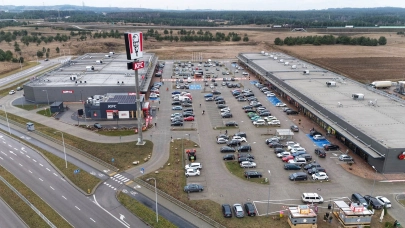
The maturity of the industrial real estate sector in Poland’s five largest markets does not necessarily mean limited investment opportunities for developers and tenants. The importance of smaller markets has been growing recently in Poland, which gives the possibility to expand into locations that were previously out of developers’ and tenants’ interests, according to JLL.
The growing maturity and scale of the industrial market in Poland offer a wide choice for tenants, as well as greater flexibility for companies looking for space available at hand and more competitive rents. At the same time, the shrinking labour pool in the Big Five's markets means that developers and tenants are increasingly looking at less obvious regions, such as Częstochowa, Kutno, Włocławek and Białystok.
According to the "Small town, big deal” report by JLL, Hillwood Polska and the Manpower Group, although the largest industrial real estate stock, both already existing on the market and under construction, can be found in the markets of the Big Five, there is also a number of other locations offering more than 300,000 sqm of space. Good examples of this are Szczecin, Piotrków Trybunalski, Tri-City and Kraków. Moreover, available modules of over 20,000 sqm can also be found in the Tri-City and Kielce, while investments offering the possibility of leasing approx. 10,000 sqm - in Bydgoszcz, Kraków and Szczecin.
“Although some regions do not currently offer even 50,000 sqm, it is their ‘immaturity’ that can be an advantage, especially in terms of availability. These destinations include Białystok, Gorzów, Tarnobrzeg, Włocławek, Częstochowa, Piła, Tarnów, Elbląg and Kalisz”, says Tomasz Mika, Head of Industrial Poland, JLL.
On the other hand, in addition to the existing stock, the maturity of the market is also illustrated by the supply of attractive land suitable for industrial investments. These include plots of land which are at an advanced stage of preparation for the launch of construction works. Their availability in Poland remains high.
“Apart from the Big Five, where the secured land plots around each metropolitan area exceed 250 ha, most locations offer over 100 ha of land for industrial investments. For example, Konin, Legnica-Głogów District and Włocławek's land banks all exceed 200 ha. Very limited resources are characteristic for Warsaw (within the city's limits), Kraków and the Bielsko-Biała region. In total, the locations selected in the ranking, land banks (with varying degrees of preparation) would theoretically allow for the construction of around 25 million sqm of industrial space”, adds Maciej Kotowski, Research Analyst, JLL.
“An attractive location and price are 'not the be all and end all'. Land plots already prepared for the launch of construction works shorten the time of project implementation, including time spent on developing access to utilities. We plan to build two million square metres of space on secured land banks, which as a result will double our existing portfolio over the next few years”, comments Hubert Michalak, Head of Hillwood Poland.
The decrease in the supply of investment plots in the most attractive locations is obviously a result of the sector's rapid development. This, in turn, has led to an increase in land prices, especially in the case of the largest markets. Nevertheless, the availability of plots attractive for warehouse investments is still relatively high at fairly attractive prices. The cheapest investment plots can be found in the vicinity of Elbląg, Tarnów, Opole, Radom, Piotrków, Włocławek, Tarnobrzeg and Olsztyn, as well as Zielona Góra, where prices start from €10 per sqm. On the other hand, the most expensive locations, with prices starting from €40 per sqm are around Gliwice and Kraków to over €80 in Warsaw.
“In the last two years, we have seen an increase in construction costs. This concerns both the construction of a warehouse and the accompanying infrastructure, including access roads. Therefore, with rising land prices and falling vacancy rates, we are observing pressure to increase rental rates. Rental fees have already increased in Wrocław, Szczecin, Opole, on the markets of Western Poland, and in Warsaw. We expect this trend to continue and rents are likely to further increase in the next two years”, adds Tomasz Mika.
Taking into account land prices, the most cost-effective locations selected in the ranking include Włocławek, Radom, Piła and Elbląg. In turn, the lowest rents are to be found in Piotrków Trybunalski and Stryków.1



